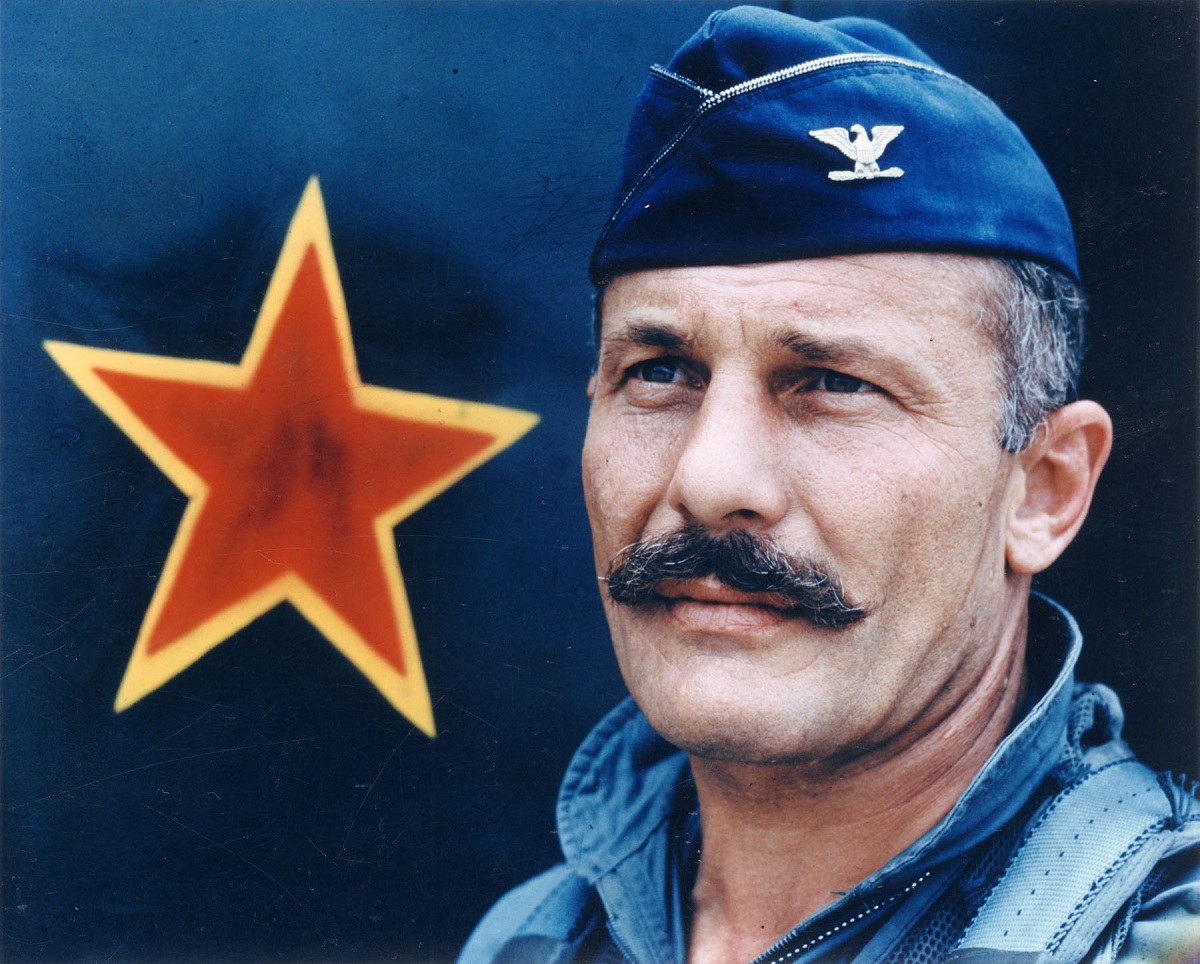USAF “triple ace” Robin Olds is credited as wearing a mustache as a sign of resistance against authoritarian authority
Military men have worn mustaches throughout history. Younger men and those in lesser ranks typically wore mustaches that were smaller and less ornate. A man’s mustache would get thicker and bushier as he rose in rank until he was allowed to grow a full beard. It was fashionable during the American Civil War to have a thick mustache and a lengthy goatee like General Lew Wallace did.
Every year in the month of March, personnel in the United States Air Force (USAF) grow mustaches in memory of Robin Olds, a legend of the air force. The concept was inspired by an early Air Force custom in which military men would grow mustaches in amusing defiance of facial hair laws during the month of March.
The USAF’s “triple ace” Robin Olds is credited for growing a mustache as a sign of dissent against rigid command.
As explained in AFROTC Detachment 755 Cadet Document The History of Mustache March, Robin Olds was a “triple ace” spawned from an Army Air Corps father and West Point with a combined total of 16 victories in WWII and Vietnam.
In Vietnam, Col. Olds was renowned for his extravagantly waxed handlebar mustache. Because it was believed that only “bulletproof men” would return home alive at the time, and “real men” wore mustaches, many Airmen sported what was known back then as a “bulletproof mustache.” However, mustaches were against military regulations in the 1960s, so many were required to shave them off. As he was stationed far from his home base (Olds assumed command of the 8th Tactical Fighter Wing at the Ubon Royal Thai Air Force Base in the fall of 1966), Col. Olds decided to keep his mustache because he believed it reflected his unique personality.
The base’s kids loved it. Most people started to grow mustaches. Olds began growing the mustache after Operation Bolo’s success and allowed it to get longer than it should have because, as he put it, “It became the middle finger I couldn’t raise in the PR photographs. The mustache became my silent last word in the verbal battles…with higher headquarters on rules, targets, and fighting the war.”
The end of this flamboyance, however, came with his return home.
Olds arrived for his first interview with General John P. McConnell, Chief of Staff of the Air Force, who was not a fan of Col. Olds’ mustache. Col. Olds said, “Yes, sir,” when Gen. McConnel approached him, placed a finger under his nose, and commanded, “Take it off.”
Col Olds was not upset with the order. He said, “To tell the truth, I wasn’t all that fond of the damned thing by then, but it had become a symbol for the men of the 8th Wing. I knew McConnell understood. During his visits to Ubon over the past year he had never referred to my breach of military standards, just seemed rather amused at the variety of ‘staches sported by many of the troops. [It] was the most direct order I had received in twenty-four years of service.”

The incident involving the mustache is credited with sparking a new Air Force tradition known as the “Mustache March,” in which aircrew, aircraft maintainers, space operators, cyber operators, and other Airmen from around the world demonstrate their unity by staging a symbolic, albeit amusing “protest” against the rules regarding facial hair for one month.
Photo by U.S. Air Force

